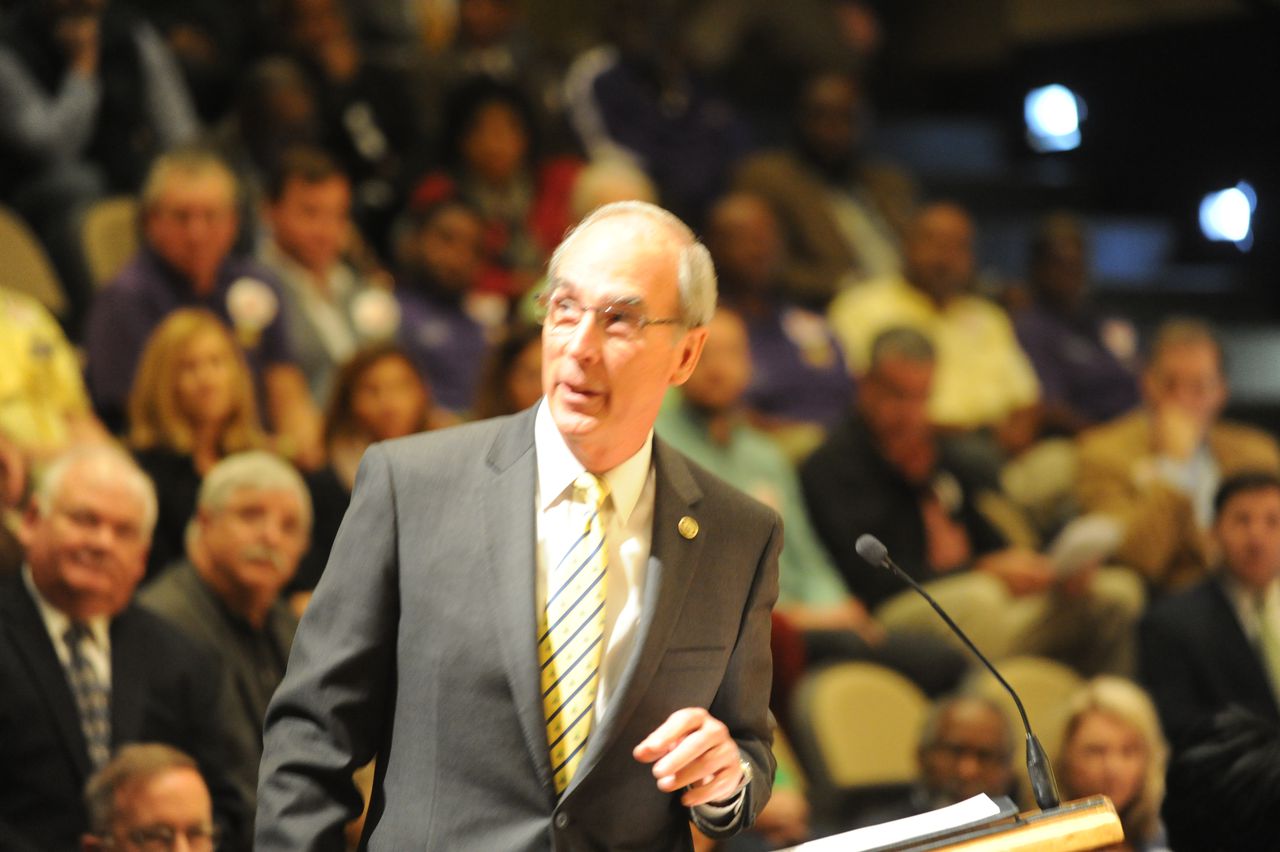Mobile annexation: Council vote sets stage for city to become second largest in Alabama
For the first time in three years, and five months, a major annexation plan is before the Mobile City Council for consideration.
Unlike the 2019 vote, though, this proposal seems to be headed for passage.
Read more:
Here is what is at stake when the council, during its meeting at 10:30 a.m. today, votes to allow a large number of people within its unincorporated areas west of the city’s limits to vote on whether they should be annexed into the city limits.
What is the council voting on?
Four annexation resolutions are added to the council agenda for consideration. The four resolutions, if approved, will establish a special election within an area outside of the city’s limits on the question of whether they want to annex into Mobile.
The City Council’s vote does not grant annexation. All it does is allow for a special election, which will be administrator by the Mobile County Probate’s Office, to take place later this year on the issue of annexation.
How many new residents could come into Mobile?
The areas combined are part of Annexation Study Area A. Bringing in all four annexation areas would add 25,806 new residents to the city — equivalent to bringing in a population that is about the size of the entire city of Trussville near Birmingham, and larger than the entire city of Fairhope.
What’s changed from 2019?
Mobile Mayor Sandy Stimpson speaks in support of an proposal that would have allowed for a special election on whether to annex around 13,000 residents into the city of Mobile. The Mobile City Council voted 4-3 on Tuesday, Nov. 19, 2019, against the mayor’s plans. A supermajority, or five votes, were needed for passage. (John Sharp/[email protected]).
In 2019, amid concerns over a lack of information about whether annexation would provide a positive revenue stream to the city, the council voted — along racial lines – to defeat it. The vote was 4-3, with the council’s four white members (John Williams, Joel Daves, Gina Gregory and Bess Rich) voting in support of allowing a special election for annexation and the three Black council members (C.J. Small, Fred Richardson, and Levon Manzie) voted against it.
It takes a five-vote supermajority for approval. The council, which typically has seven members, is down to six members after former Councilman Scott Jones resigned. Only one “No” vote is allowed during today’s meeting in order to allow the special elections to occur.
The 2019 proposal called for bringing in approximately 13,000 new residents. Concerns about eroding the city’s Black voting age population majority surfaced, and political headaches followed. A campaign mailer was circulated through the city’s Black districts warning about the effects of a “No” vote.
Of the three Black members — Small, the current council president — remains. He said last week that he is leaning toward supporting the latest proposal. He cited supportive information for annexation contained within a 139-page study from the PFM Group released last month. The study showed that Mobile would benefit financially through annexing properties west of the city limits. Supporting annexation could also be done without eliminating the city’s majority Black voting age population, the study showed.
Small also said his support is based on Mobile Mayor Sandy Stimpson’s administration’s support of long-neglected projects within his mostly Black council district south and east of downtown Mobile.
The Council’s other two Black members — William Carroll, who replaced the late Council President Levon Manzie; and Councilman Cory Penn, who replaced longtime Councilman Fred Richardson — have indicated they are supportive of allowing residents to vote for annexation.
Six people are signed up to speak on annexation before the council’s scheduled to vote on it today.
“I’m happy to hear the concerns between now and when we vote on this,” Carroll said during last week’s council meeting. “I’ve had more people call me who look like me who said we need to move this forward. It truly inspired me. Let’s pray any decision made by the city of Mobile are for the betterment of all of us.”
Could Mobile be the No. 2 largest city in Alabama?
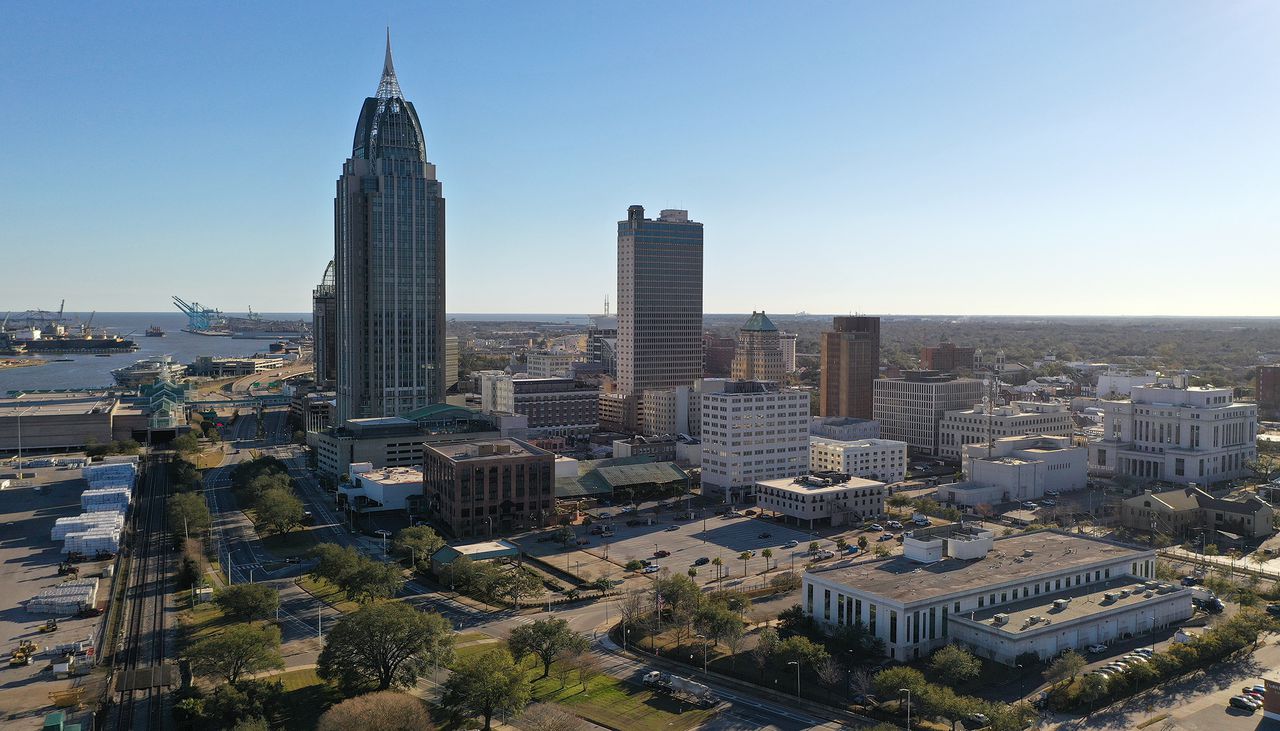
Drone photo of Mobile skyline. Mobile photos 2021. (Joe Songer | [email protected]).Joe Songer | [email protected]
Yes, depending on whether all of the separate neighborhoods slated for annexation approve it during the special election.
Related content:
Absent any annexation, PFM estimates Mobile’s population declining from it’s current population of 187,041 residents to 179,305 by 2030.
If Area A is approved, the city’s population will grow to 212,847. By 2030, with Area A’s annexation, it is estimated for Mobile to be at 208,527. Mobile, under Area A, would be bigger than Montgomery (200,603 residents) and Birmingham (200,733 residents), but still trail fast-growing Huntsville, which has a population of 215,006.
Annexation supporters also say that boosting Mobile’s population above 200,000 residents makes the city eligible for more grant opportunities than if the city was below that 200,000 threshold.
Will Mobile maintain its majority minority voting age population?
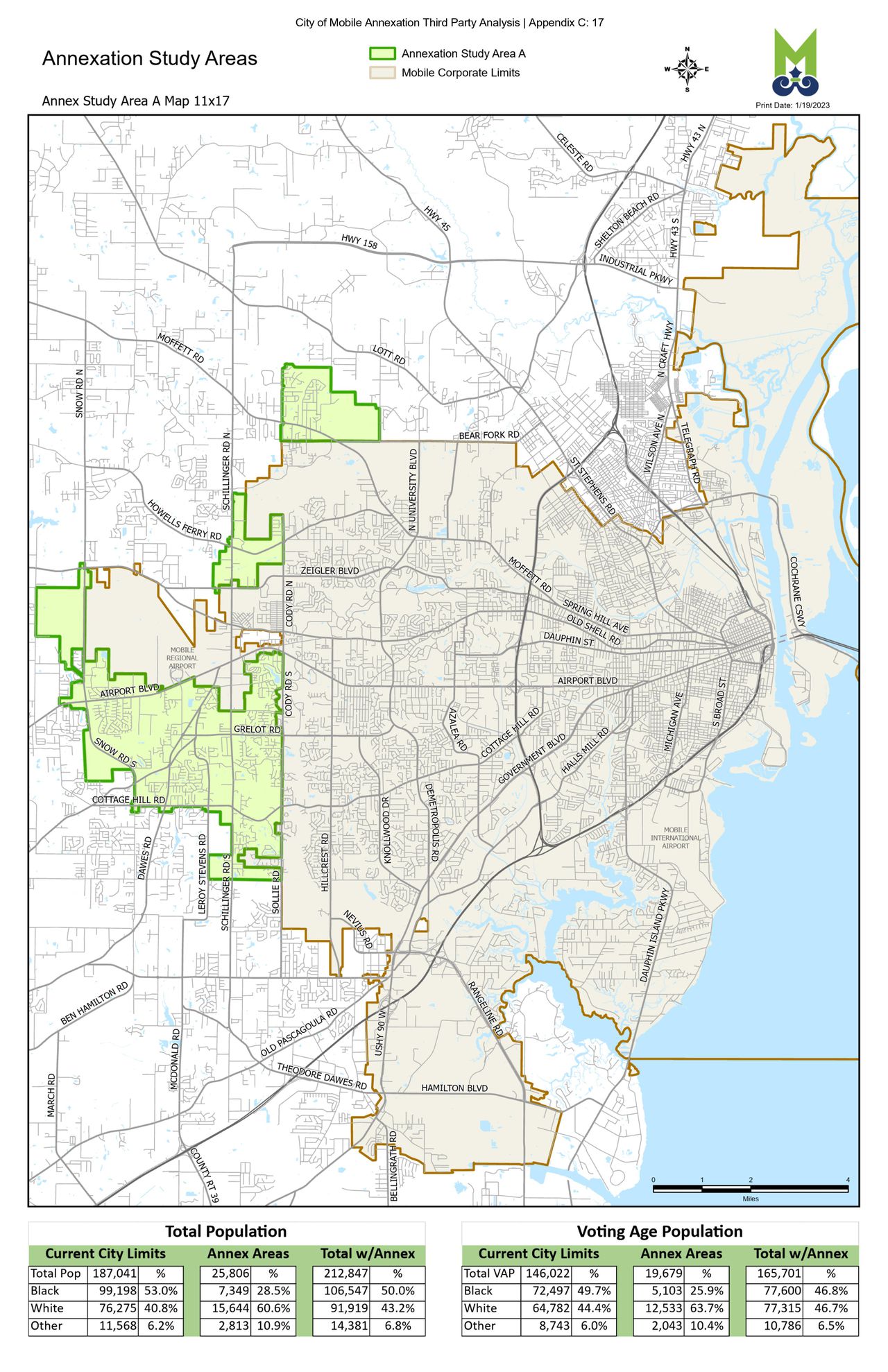
Annexation Study Area A. This proposal would annex 25,806 residents into the city of Mobile. The city council will vote on four resolutions Tuesday to authorize a referendum in this area on whether or not the residents want to be annexed. (Graphic courtesy City of Mobile)
That’s debatable. Under Area A’s plan, the city’s voting age population (age 18 and above) would go from 146,022 to 165,701.
The city’s current voting age population’s demographics, according to the PFM report, is 72,497 Black (49.7%) to 64,782 white (44.4) and Other at 8,743 (6%). Under Area A, the city would annex 19,679 people who can vote, with 5,103 Black (25.9%), 12,533 white (63.7%) and 2,043 Other.
The new voting age demographic distribution would then be 77,600 Black (46.8%), 77,315 white (46.7%), and 10,786 Other (6.5%).
The existence of the Other category had Richardson, the former councilman, concerned during last week’s council meeting. But Penn, who replaced Richardson on the council in District 1 — the city’s largest majority Black district — argued that there is no way to determine how Hispanic or Asian residents might vote in future city elections.
Will there be another redistricting?
Most likely, yes.
James Barber, the city’s chief of staff, said last week that the administration would prepare for the City Council another redistricting map for their consideration if a large annexation plan is voted on and approved.
It would, of course, be up to the council on whether they adopt a new redistricting plan after annexation.
That would likely happen in order to maintain a population balance among the seven council districts. The council finalized a contentious redistricting effort last year that, for the first time in Mobile’s history, resulted in a council map with a majority Black districts in a city with a majority Black voters.
If the city adds tens of thousands of new residents, those redistricting efforts would likely be tossed out and the entire process started anew.
How do I watch today’s proceedings?
The Mobile City Council meetings are livestreamed: https://www.youtube.com/channel/UCdLrEwf3ewSNmCNm21fVfNg/live
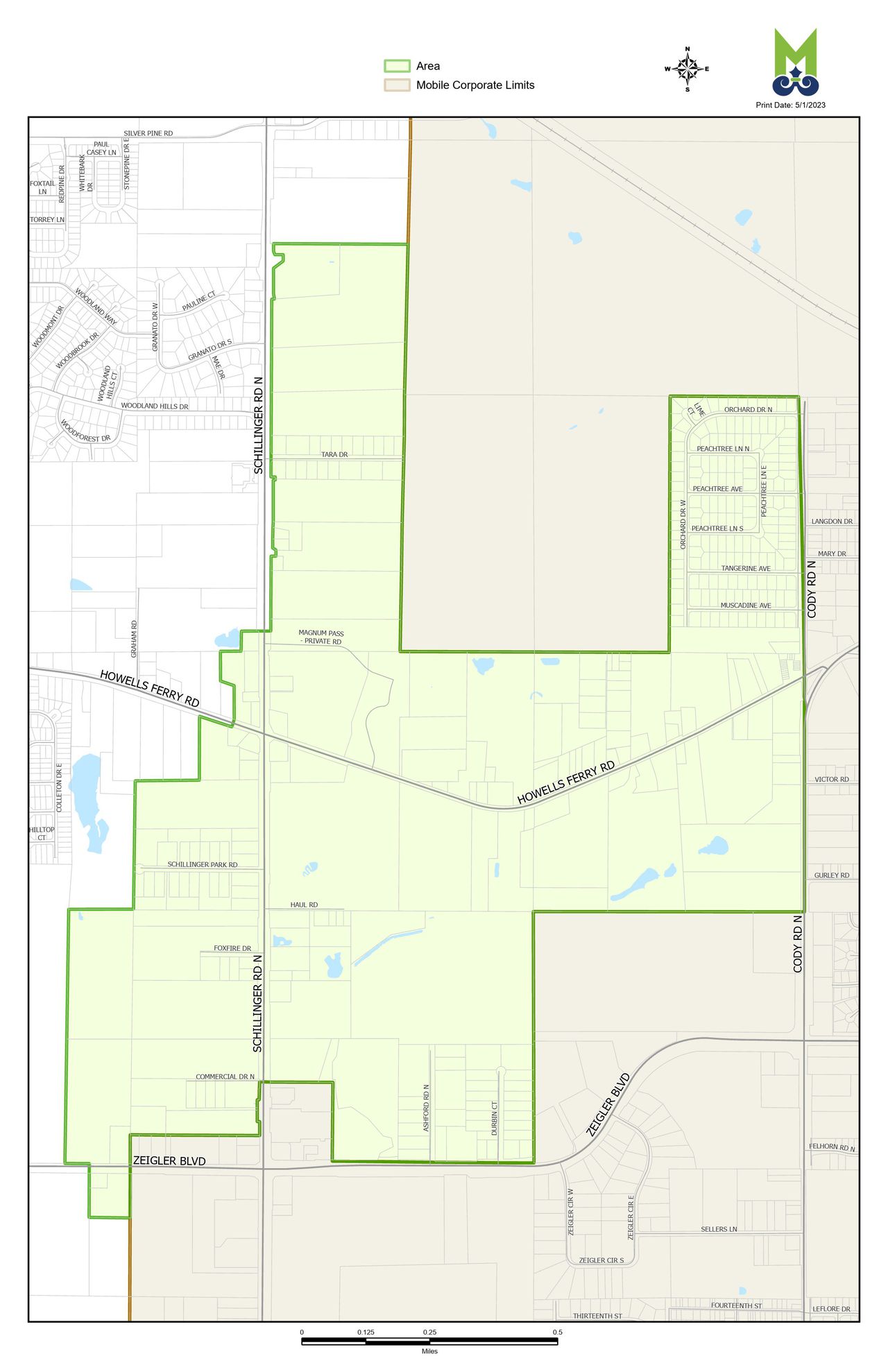
This map includes the Orchard Estates subdivision. This area is surrounded by the city of Mobile on three sides.
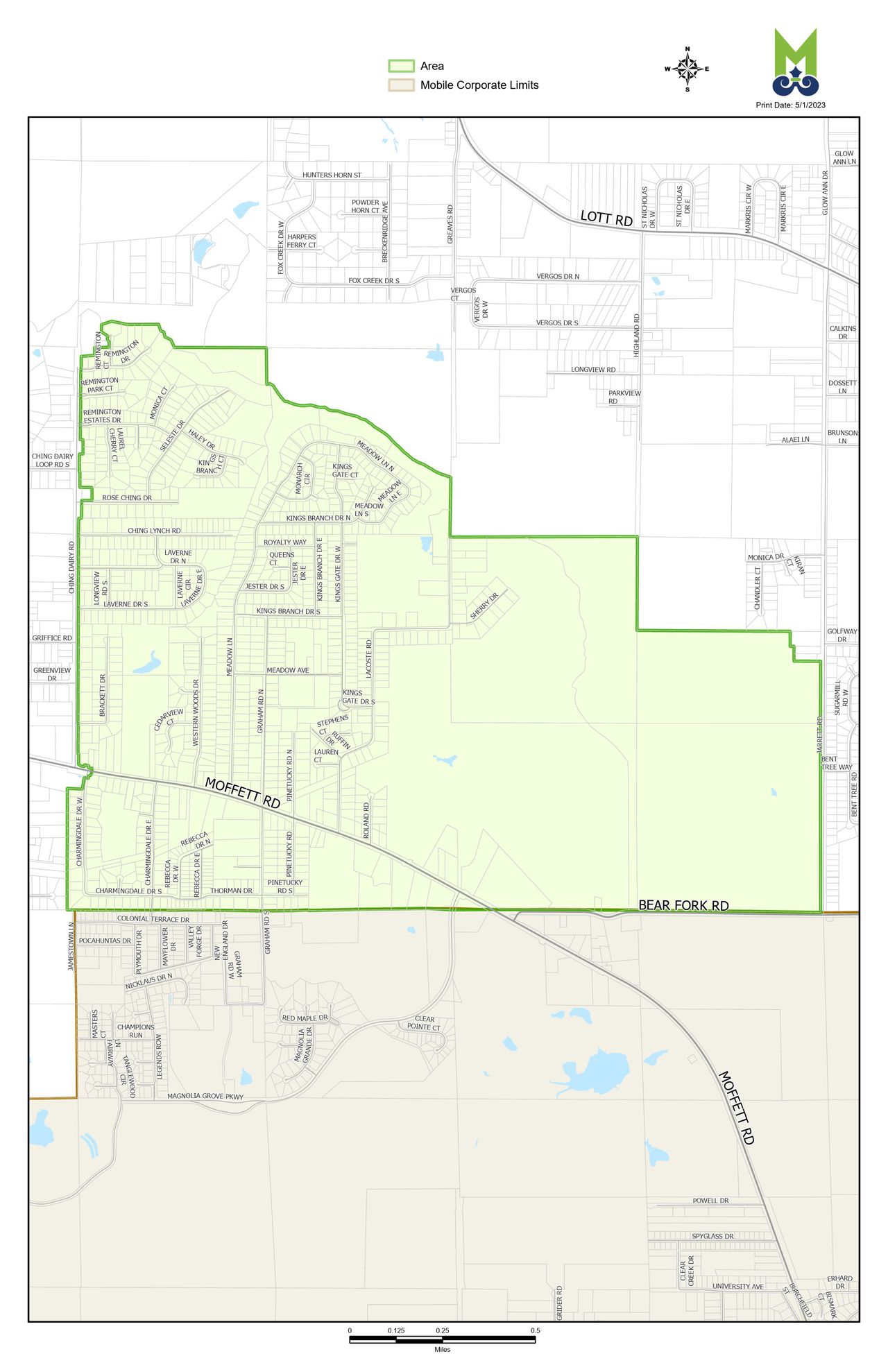
This area includes Kings Branch Estates, a subdivision northwest of the city of Mobile. Kings Branch is racially diverse and had been part of the mayor’s failed annexation attempt in 2019.
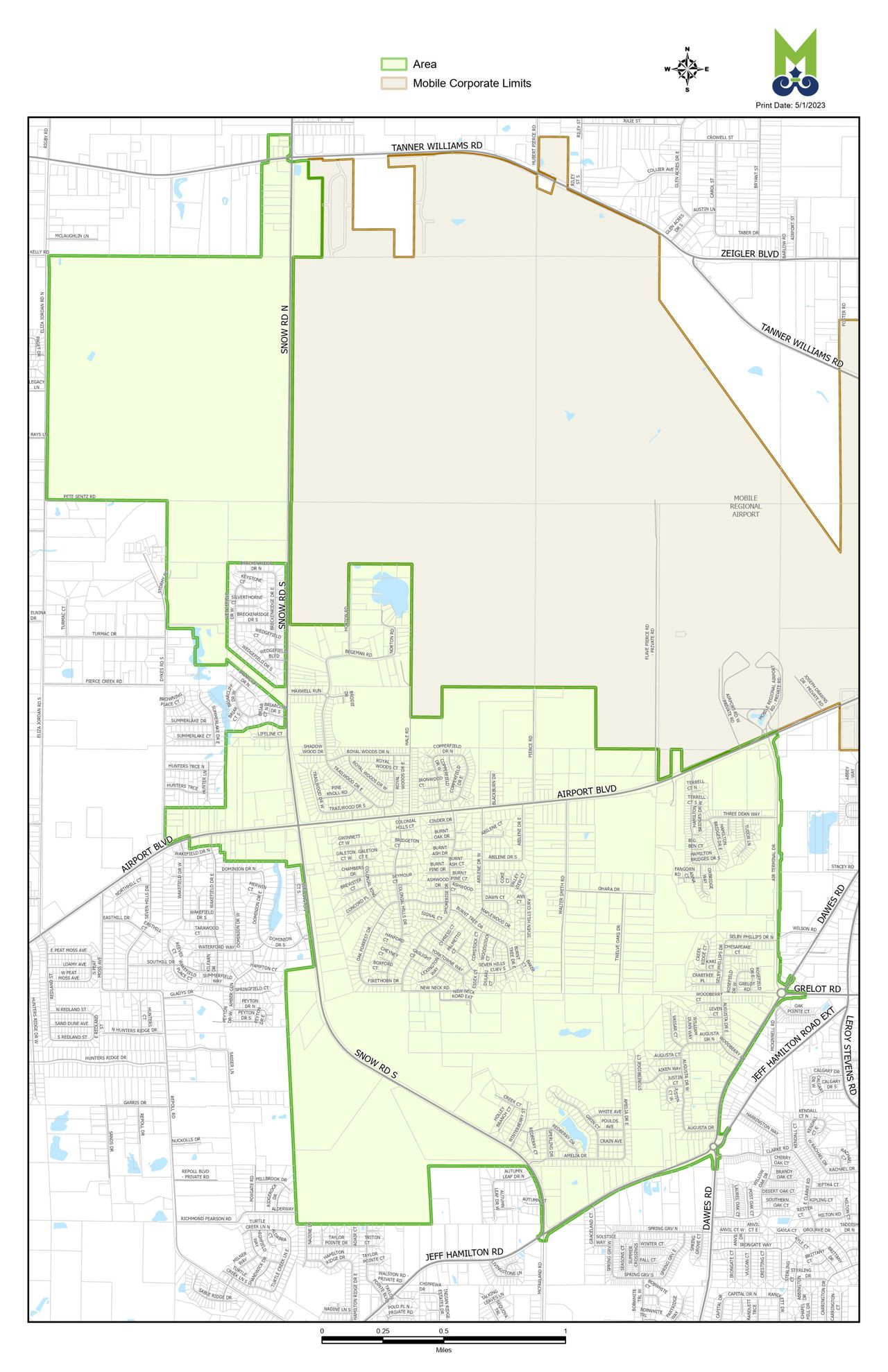
This area includes subdivisions and homes adjacent to the Mobile Regional Airport, which is within city limits.
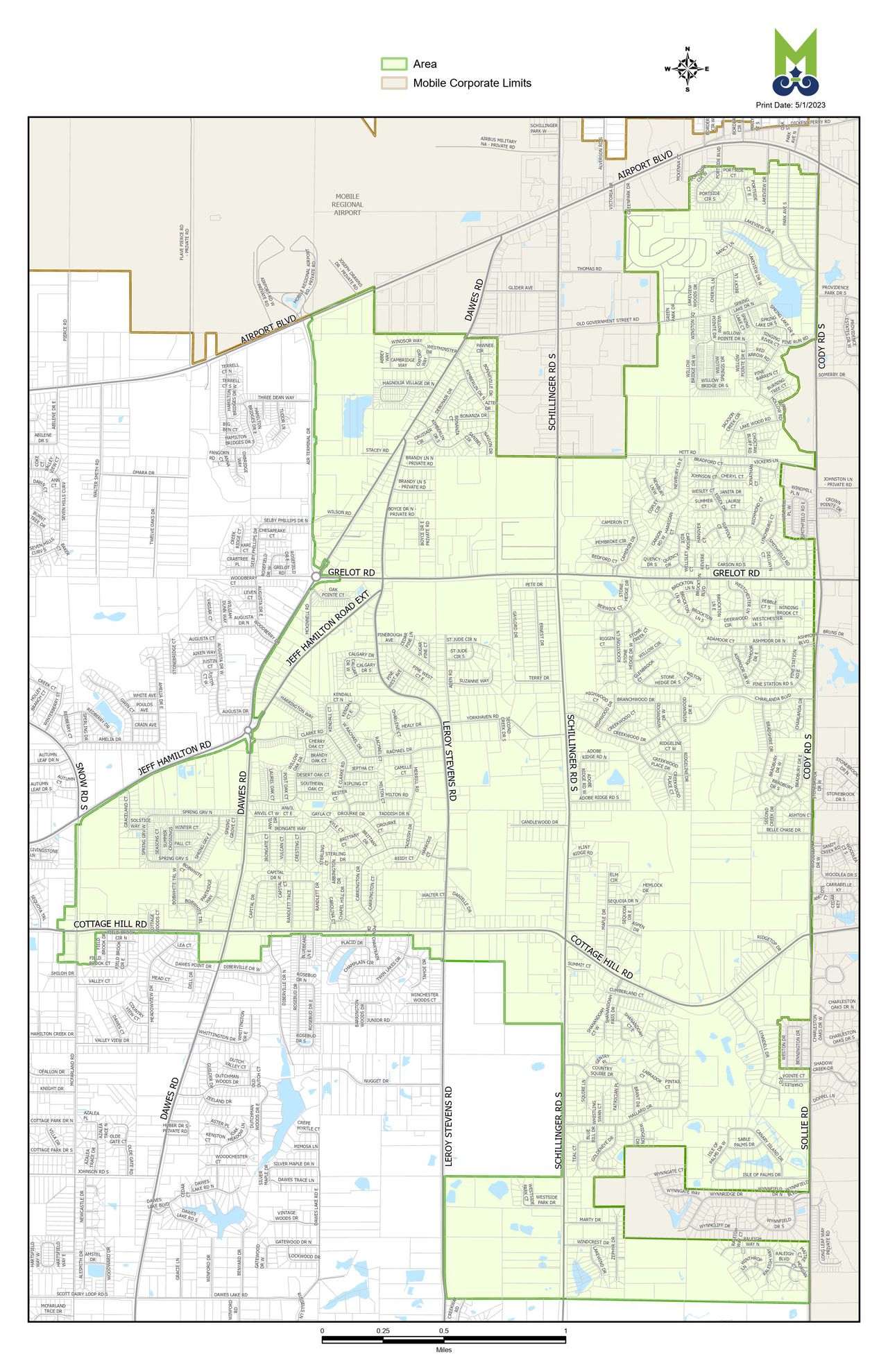
This area, known as the Cottage Hill region, has been the most vocal about joining the city of Mobile. Many residents in these areas requested to be annexed by the city of Mobile in order to access city services, such as emergency medical services and garbage pickup.
